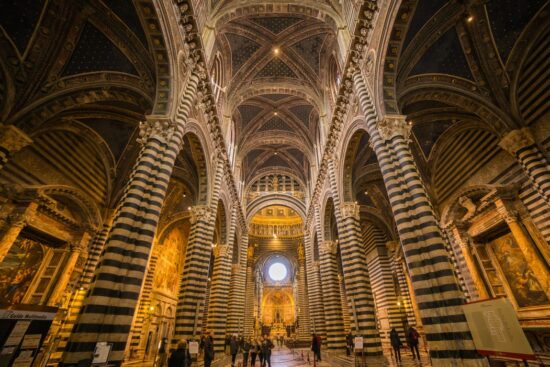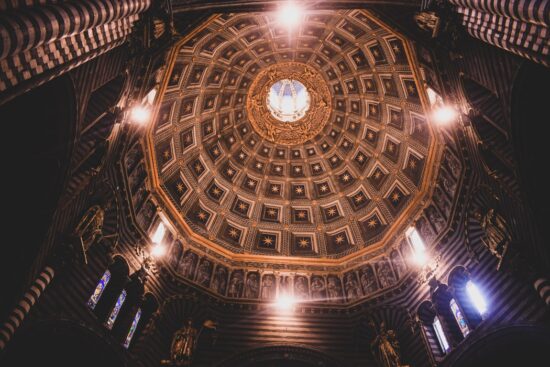Santa Maria Assunta Cathedral
Santa Maria Assunta is the city’s main cathedral. Moving backward towards Piazza Postierla following the same line of Via S. Pietro to the northwest you enter the road Via del Capitano that will take you to Piazza del Duomo, the square of the Cathedral of Santa Maria Assunta. Via del Capitano took its name from the Palazzo del Capitano del Popolo, a 13th-century Gothic-style palace, that used to serve as the residence of the War Captain and the Captain of Justice.
Today the brick and stone palazzo, on via del Capitano No13-19 is in the possession of Fondazione Monte dei Paschi di Siena. Sadly it is a piece of history that remains hidden, right next to the immense light of the Duomo and the Santa Maria Della Scala, since it’s not open to the public but this might change in the future, and then it will surely be worth a visit.
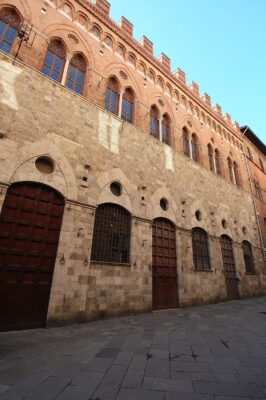
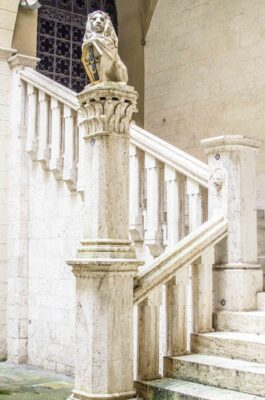

The Piazza is of course dominated by the massive Cathedral, dedicated to Maria Assunta, consecrated according to tradition in 1179 by the Sienese Pope Alexander III. The close link between Siena and the Virgin dates back to September 4, 1260, the date of the famous Battle of Montaperti when Siena fought against Florence, in a battle that made the Arbia River red according to Dante. On the eve of this battle, all the Sienese gathered outside the Duomo to pray for a victory and solemnly consecrate the city and the newly built cathedral to the Madonna. The next day, the Sienese army defeated Florence, and Siena from that moment became the “City of the Virgin.”
The cathedral and bell tower had already been completed in 1264. In 1317 the expansion of the cathedral towards Vallepiatta and construction of the lower Baptistry began. In 1339 the Sienese decided to build a larger cathedral that would surpass in size and splendor that of the hated Florence, using the existing building as the transept and building a huge body with its front facing Via di Città.
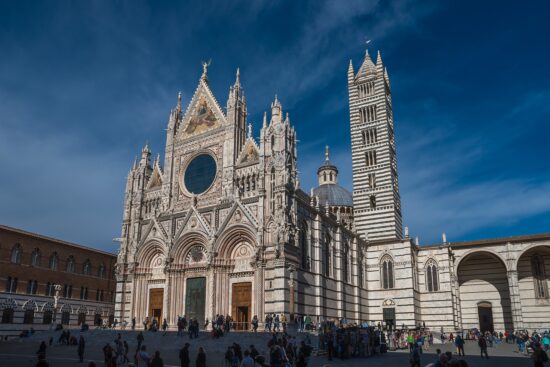
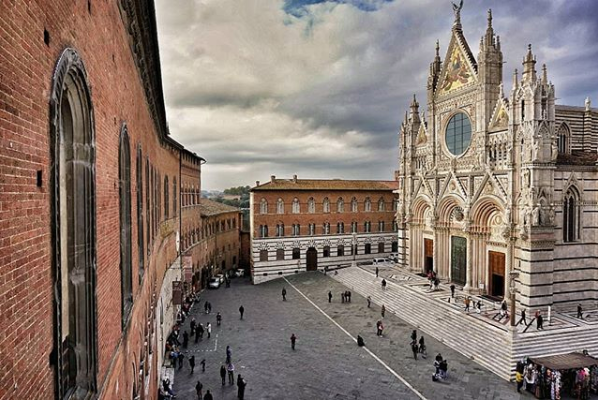
However, this new and impressive building was never implemented for various reasons, including the terrible plague of 1348 and the low resistance of the soil. The “Duomo Nuovo” would remain only as a skeleton circumscribed by pillars and a huge facade affectionately called by the Sienese the “Facciatone” adjacent today to the south-eastern edge of the Museo dell Opera Metropolitana del Duomo.
The facade of the Duomo, designed by Giovanni Pisano between 1285 and 1297, emerges in all of its spectacular beauty thanks to the presence of spires, pinnacles, statues of animals, prophets, and sibyls, a perfect synthesis of Gothic sculpture. The lower area consists of three portals, and the upper one, with a large central “eye”, is divided into three sections crowned by spires and pinnacles.

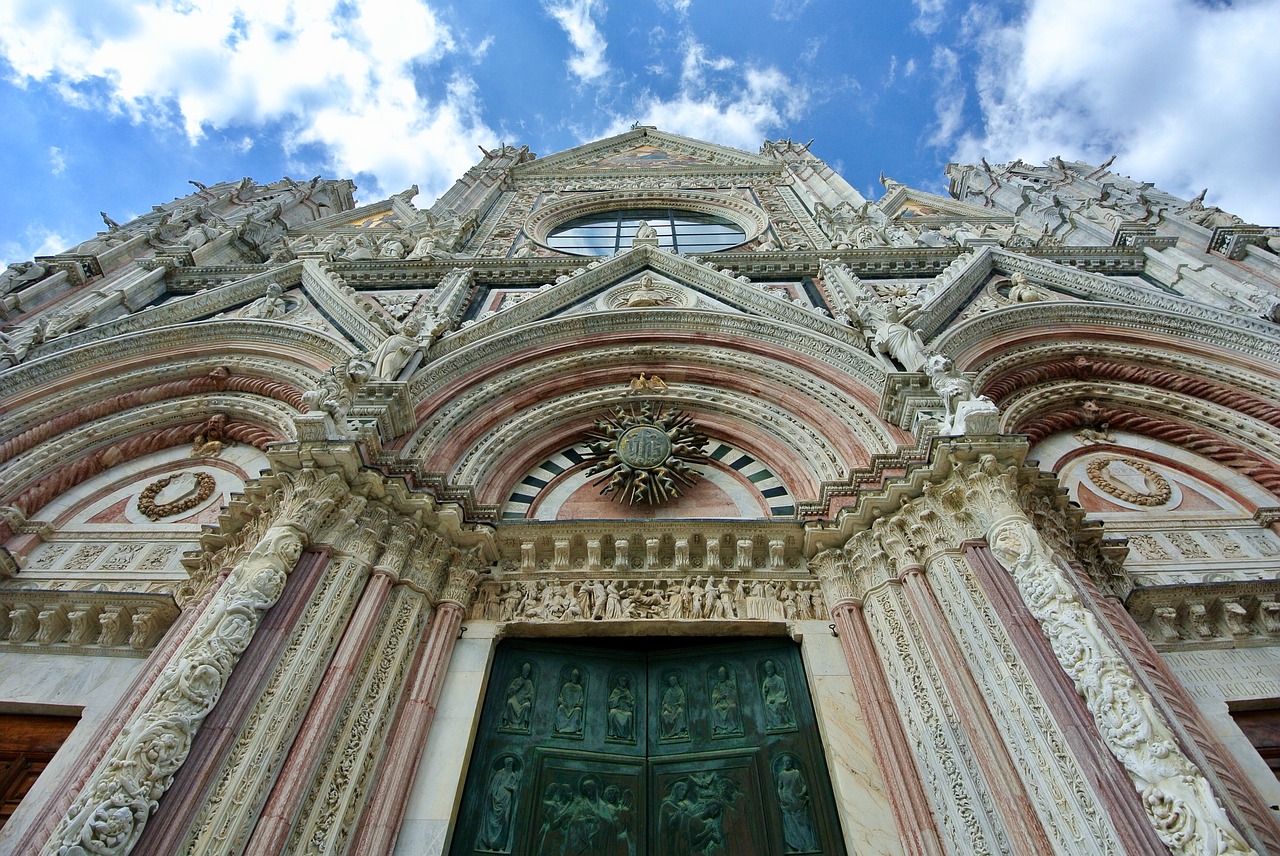
Inside the space is divided into three naves with massive pillars decorated with alternating bands of white and black marble, the same coating also used for its walls. The mosaic floor “The largest, most beautiful and magnificent floor that was ever built” according to Giorgio Vasari is made up of 56 marble panels inspired by the Bible, painted between 1369 and 1547, and designed by great artists such as Matteo di Giovanni and Domenico Beccafumi.
On the left aisle, we find the Piccolomini altar erected around 1480 by the Lombard sculptor Andrea Bregno. In 1501 Cardinal Francesco Piccolomini Todeschini (later Pope Pius III) commissioned Michelangelo to execute 15 statues for this altar, but the artist did not honor his contract probably because at the same time he was preoccupied with one of his greatest works for the city of Florence, his famous David. He did deliver however 4 statues: of St. Peter, St. Paul, Sant ‘ Augustine, and St. Gregory that still stand in the lower niches.
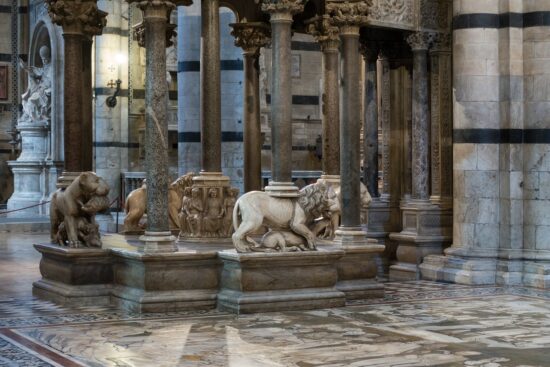
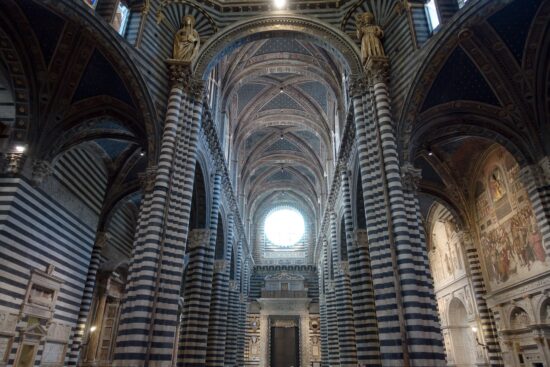
Next, the amazing Piccolomini Library, a large architectural complex built in 1492 by the will of Cardinal Francesco Todeschini Piccolomini in honor of his uncle Pope Pius II. The library was supposed to house the rich collection of books of the Pope, a great lover of literature and author himself, however, it never fulfilled its initial purpose.
The interior is decorated with frescoes painted between 1505 and 1510, by Bernardino di Betto, aka Pinturicchio, illustrating in 10 boxes the most important episodes of the life of Pius II. In the windows, they are kept large choir books of the fifteenth and sixteenth centuries decorated with precious miniatures. At the center of the room on a kind of column is the group of the Three Graces, a Roman copy of a Greek original of the third century.


A little further on in the aisle, always to the left, we find the Chapel of St. John the Baptist, built in 1486 to house the relic of the right arm of the Baptist donated by Pius II. On the back of the chapel dominates the bronze statue of St. John the Baptist executed by Donatello in Florence in 1457.
In the left transept, we have the Pulpit by Nicola Pisano, fundamental work of Italian Gothic sculpture. And ‘is octagonal and supported by nine columns arranged on the perimeter, which are alternately on the marble plinth or the backs of lions and lionesses. At the base of the center, the column is the Liberal Arts.
On the top scenes are depicted episodes of the New Testament such as the Visitation, the Birth of Jesus, the ‘ Adoration of the Magi, the Presentation in the Temple, the Flight into Egypt, the Massacre of the Innocents, the Crucifixion, the Last Judgment. Nicola sculpted well 307 people and about 70 animals, with the Exchange and the son of John Arnolfo’s help.

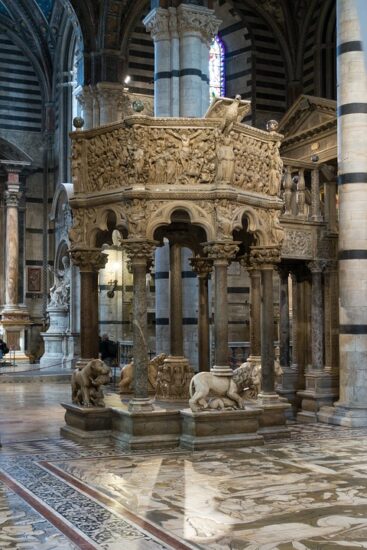
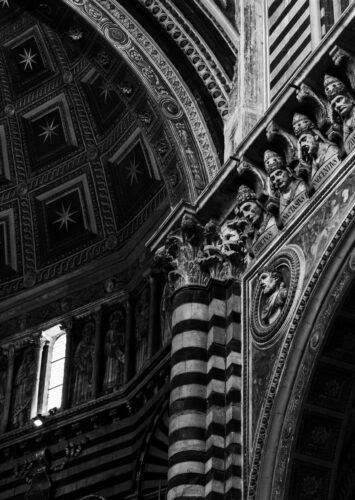
Until the early sixteenth century above the main altar stood the Majesty painted by Duccio between 1308 and 1311. Thanks to an anonymous chronicle of the fourteenth century, we know that the work was carried from the workshop of the painter in the cathedral and was solemnly placed there on June 9, 1311, accompanied by music and songs, with great popular participation and presence of all the Sienese civic magistrates. Today, the Majesty is kept inside the Museo dell’Opera del Duomo.
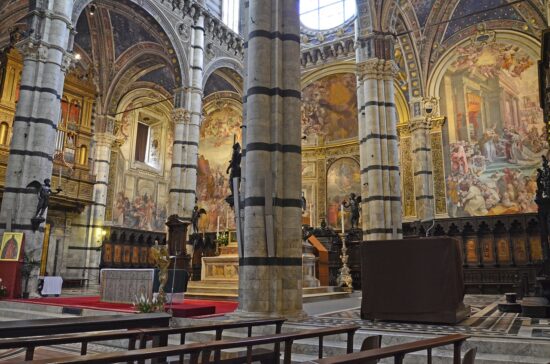
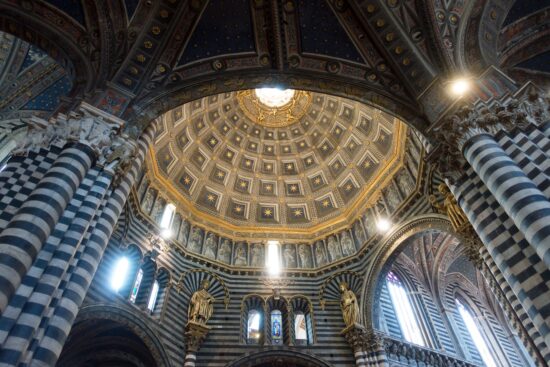
In the right transept, we find the Cappella del Voto, the Chapel of the Vow, restored in its present form in 1658. Above the altar is the Madonna del Voto Diotisalvi work of Speme (ca. 1270), much venerated by the Sienese. In front of it the Contrada of the Contrada winner of the Palio of August sing the’ Thanksgiving Hymn to the Virgin Mary Mater Gratiae.
Overall this jewel of unimaginable architectonic beauty can only be described as an awe-inspiring treasure trove of art that carries all the greatness of the city’s days of glory compacted all in one place. Description by the commune.Siena.it
